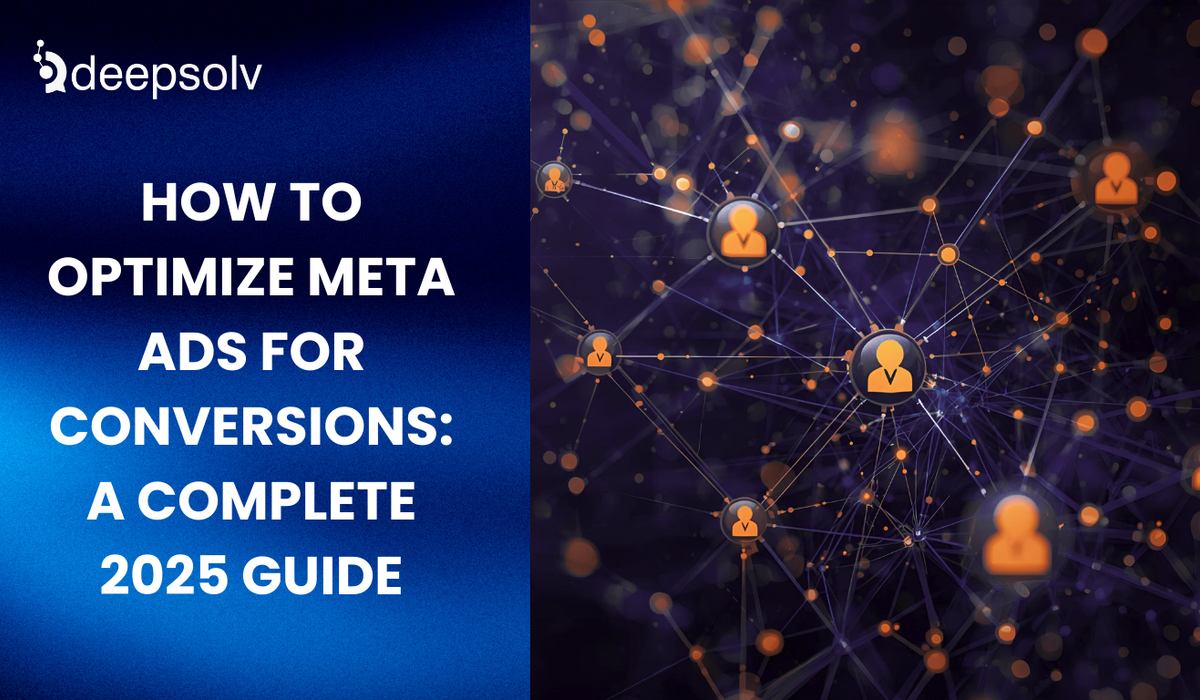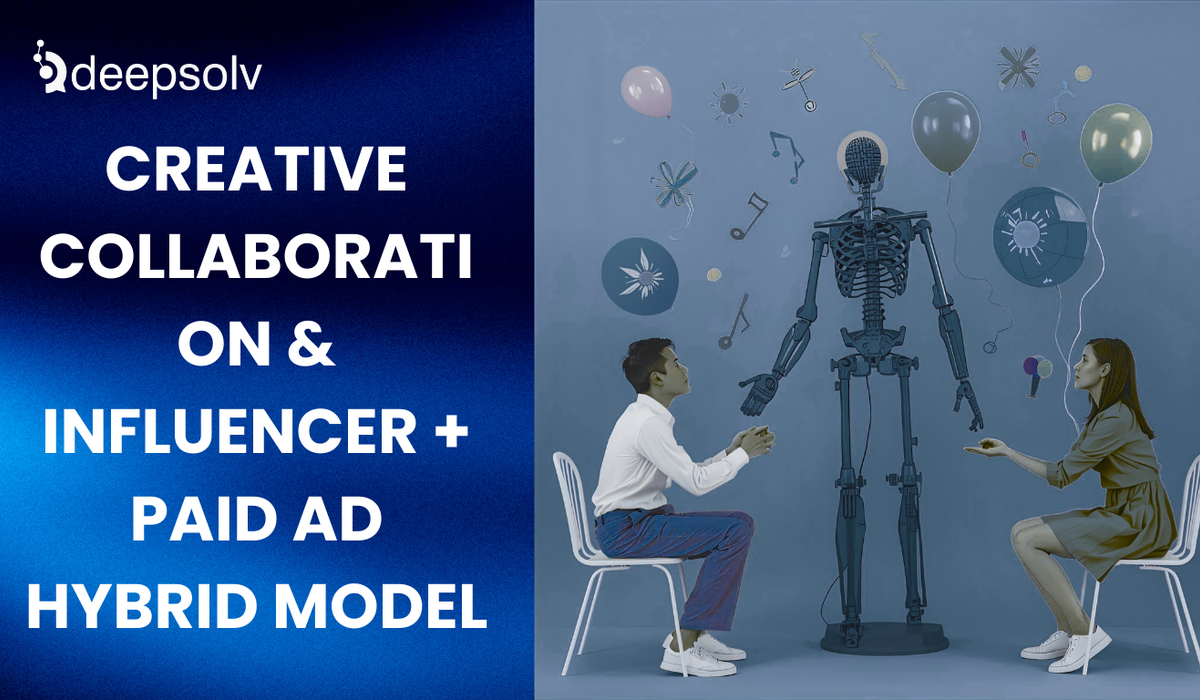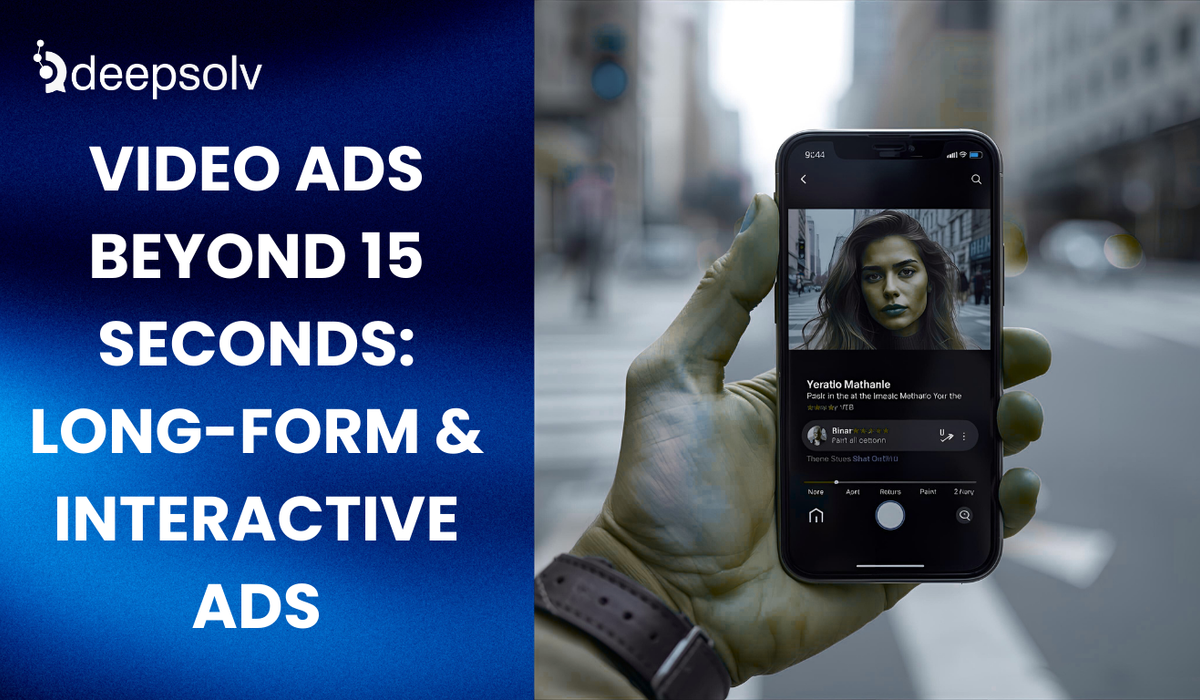How to Optimize Meta Ads for Conversions: A Complete 2025 Guide
5 min read
Published: 9/27/2025

Why Conversion Optimization Is the Make-or-Break for Meta Ads in 2025
If 2023 was about figuring out how to survive iOS updates and signal loss, then 2025 is about one thing: converting every click into revenue.
Meta ads are still one of the most powerful growth engines for DTC brands but they’re also brutally competitive. CPMs are up, audiences are savvier, and it’s no longer enough to “just run ads.”
Here’s the truth:
- You could have the best targeting in the world, but if your landing page takes 4 seconds to load, conversions die.
- You could spend $20,000 a month on beautiful UGC creatives, but if your events aren’t tracked, Meta can’t optimize properly.
- You could even get thousands of likes on your ad, but if no one is buying, you’re paying for vanity.
That’s why brands crushing it in 2025 obsess over conversion optimization. Let’s break down 7 pillars of Meta ads optimization with real examples from brands you know, plus how tools like Adam and Brandy by Deepsolv fit in.
1. Get Your Tracking Foundation Right
The Gap.com Example
When Gap struggled with inconsistent reporting post-iOS14, their team rebuilt their entire event setup combining Meta’s Pixel with Conversions API (CAPI). Instead of only relying on browser cookies (which Safari blocks), they synced server-side data with Shopify orders.
The result? A 17% improvement in match rates and more stable ROAS because Meta finally had clean signals to optimize toward.
Actionable Takeaway
- Use Pixel + CAPI together, with deduplication to avoid double-counting.
- Feed offline conversions back in (retail purchases, phone orders).
- Track not just purchases but meaningful micro-events (e.g., “Quiz Completed,” “Subscription Selected”).
📌 Pro Tip: Brands that consistently feed quality data hit stable CAC faster — Meta’s algorithm is only as good as the signals you send it.
2. Audience Targeting That Mirrors Buyer Intent
Allbirds’ Segmentation Play
Allbirds doesn’t just run broad ads to “eco-friendly shoppers.” They split their campaigns into:
- New audiences (lookalikes built off repeat buyers).
- Warm engagers (people who watched their sustainability videos).
- Cart abandoners (users who added products but didn’t check out).
By tailoring creatives to each stage, Allbirds improved cart recovery rates by 31% in one quarter.
Actionable Takeaway
- Build custom audiences (site visitors, engagers, abandoned carts).
- Use lookalikes from high-value customers, not just all purchasers.
- Exclude converters so you’re not wasting money re-showing ads to buyers.
3. Creatives That Do More Than “Look Good”
Glossier’s Social Proof Ads
Glossier built an empire by leveraging UGC (user-generated content). Their Meta ads in 2024 featured raw iPhone selfies of real customers talking about their skincare routines. These weren’t polished but they screamed authenticity.
They layered that with social proof overlays like “12,000+ 5-star reviews” or “Most Loved Cleanser of 2024.” CTR improved by 42%, and conversions nearly doubled on those campaigns.
Actionable Takeaway
- Lead with hooks in first 3 seconds (motion, unexpected angles, bold statements).
- Show authentic faces (UGC > stock).
- Use social proof like reviews, ratings, and customer numbers.
✨ Tip: Use Adam by Deepsolv to generate scripts and concepts. Instead of guessing what hook to try, Adam analyzes competitor ads and trending formats to suggest campaign-ready briefs.
4. Ad Funnel Structure That Matches the Customer Journey
Warby Parker’s Sequential Ads
Warby Parker doesn’t just blast the same ad to everyone. Their funnel looks like this:
- TOF: Video ads explaining their “Home Try-On” program.
- MOF: Carousel ads showing customers unboxing glasses at home.
- BOF: Retargeting ads with urgency: “Your Home Try-On Kit is still waiting.”
By sequencing ads to match buying intent, Warby Parker cut CPA by 28% while scaling spend.
Actionable Takeaway
- Map ads to funnel stages: Awareness → Consideration → Conversion.
- Use storytelling in sequence (education → testimonials → urgency).
- Retarget with personalized offers for cart abandoners.
5. Bidding & Budget Strategy That Reduces Waste
Gymshark’s Smart Scaling
Gymshark’s performance team avoids “dumping” money into ad sets too fast. They scale budgets gradually (+20% per day), ensuring campaigns don’t reset the learning phase.
They also leverage Cost Cap bidding to stabilize CPA during Black Friday chaos, keeping their blended ROAS above 4x.
Actionable Takeaway
- Use Cost Cap to keep CAC predictable.
- Scale budgets incrementally (not x2 overnight).
- Protect learning phase by avoiding frequent edits.
6. Fix the Post-Click Experience
Casper’s Landing Page Match
Casper mattresses tested two landing pages for the same ad. One had generic homepage messaging; the other repeated the exact value proposition from the ad: “90 nights risk-free trial. Free returns. No hidden fees.”
The matched landing page increased conversions by 22% — proving the golden rule: “Message match beats clever design.”
Actionable Takeaway
- Keep landing page headline consistent with ad hook.
- Optimize page load time (<3 seconds on mobile).
- Reduce friction with pre-filled forms, simplified checkout, and trust badges.
7. Automate Testing & Comment Management
Testing is relentless, but automation keeps you sane.
- Creative Refresh: Rotate every 10–14 days for high spenders.
- Automated Rules: Pause underperforming ad sets if CPA > X.
- Comment-to-Lead Automation: Use Brandy by Deepsolv to auto-reply to ad comments like “Price?” or “How do I order?” → instantly DM users product info or links.
💡 A DTC brand using Brandy turned 167 ad comment replies into 37 qualified leads in one week. Instead of wasting time moderating manually, they converted curiosity into sales.
Case Study: How a DTC Skincare Brand Tripled Conversions
A U.S.-based skincare startup struggled with rising CPMs and stagnant ROAS in 2024. Here’s what they changed in early 2025:
- Pixel + CAPI integration with Shopify (clean signals).
- Used Adam to analyze competitor skincare ads → found “routine-based UGC” was trending.
- Produced UGC videos featuring real customers explaining their morning routine.
- Structured funnel campaigns (TOF video, MOF carousels, BOF urgency ads).
- Used Brandy to auto-DM commenters asking about “sensitive skin” or “price.”
Results in 60 days:
- Conversion rate jumped from 2.4% → 6.9%.
- CAC dropped 41%.
- Monthly recurring revenue tripled.
Ready to 3× Your Conversions?
You can keep tweaking campaigns on your own or you can get an expert-led roadmap.
👉 Book your free strategy session with Deepsolv today. Spots are limited, and we’re only opening 10 calls this month. Learn how Adam and Brandy can turn your Meta ads into conversion machines.
FAQs
Frequently asked questions related to this blog post



